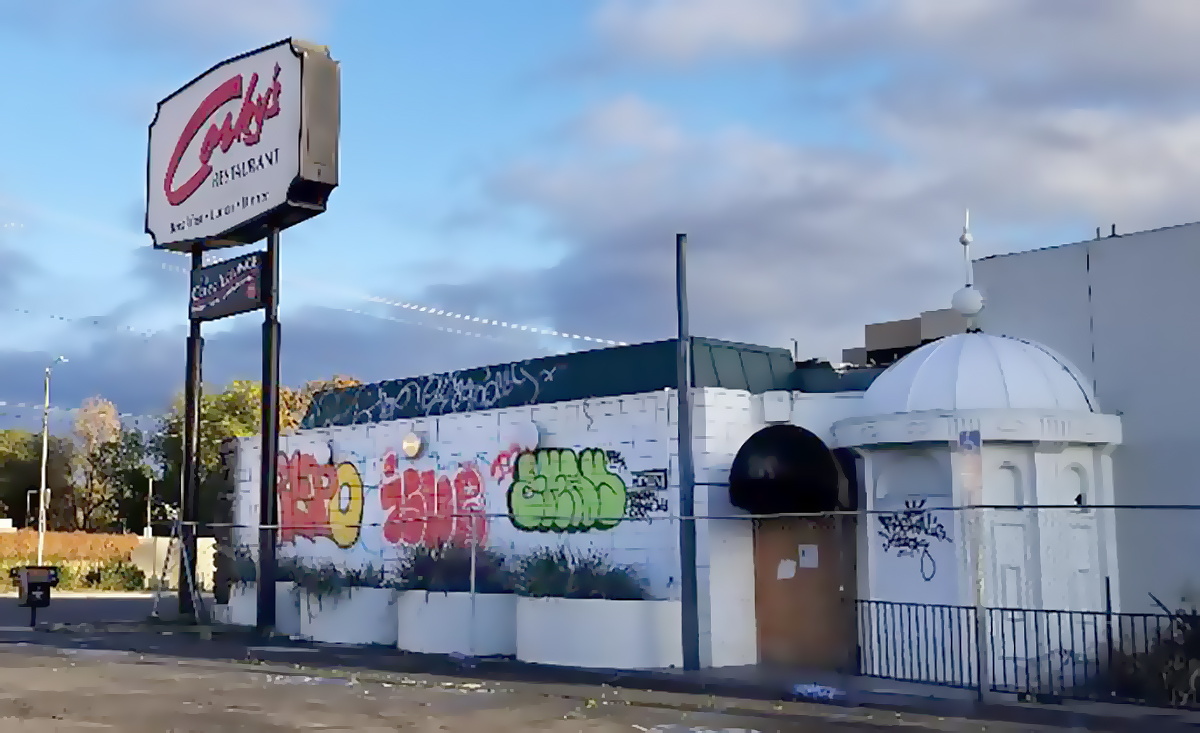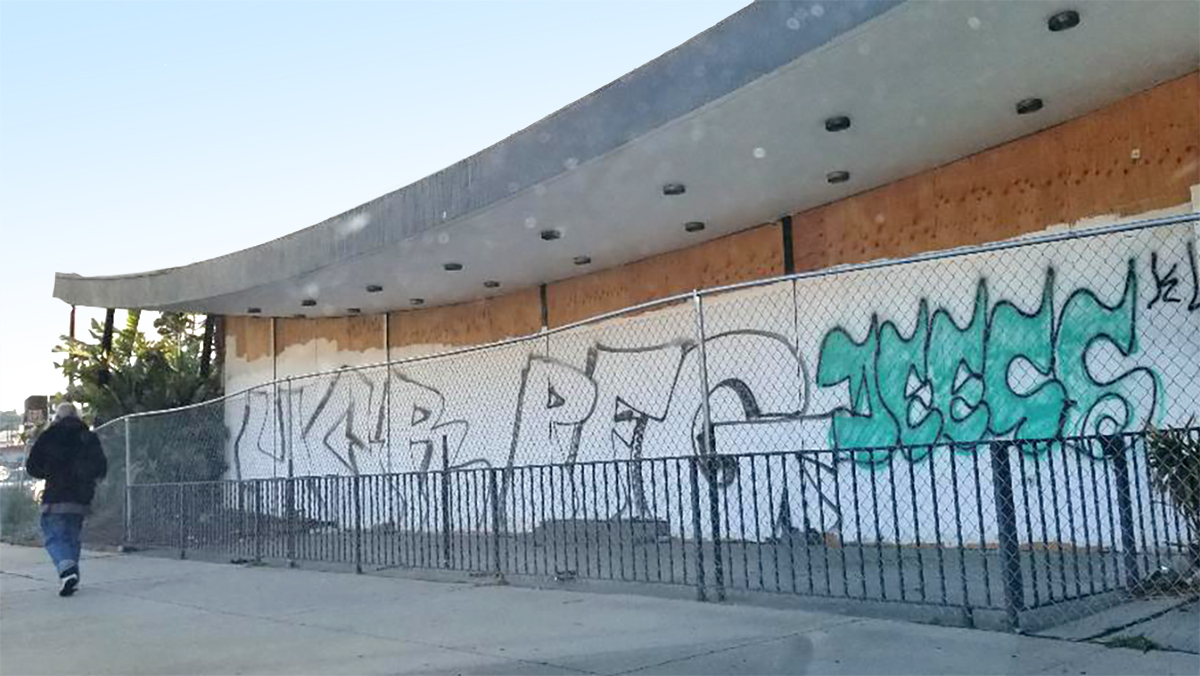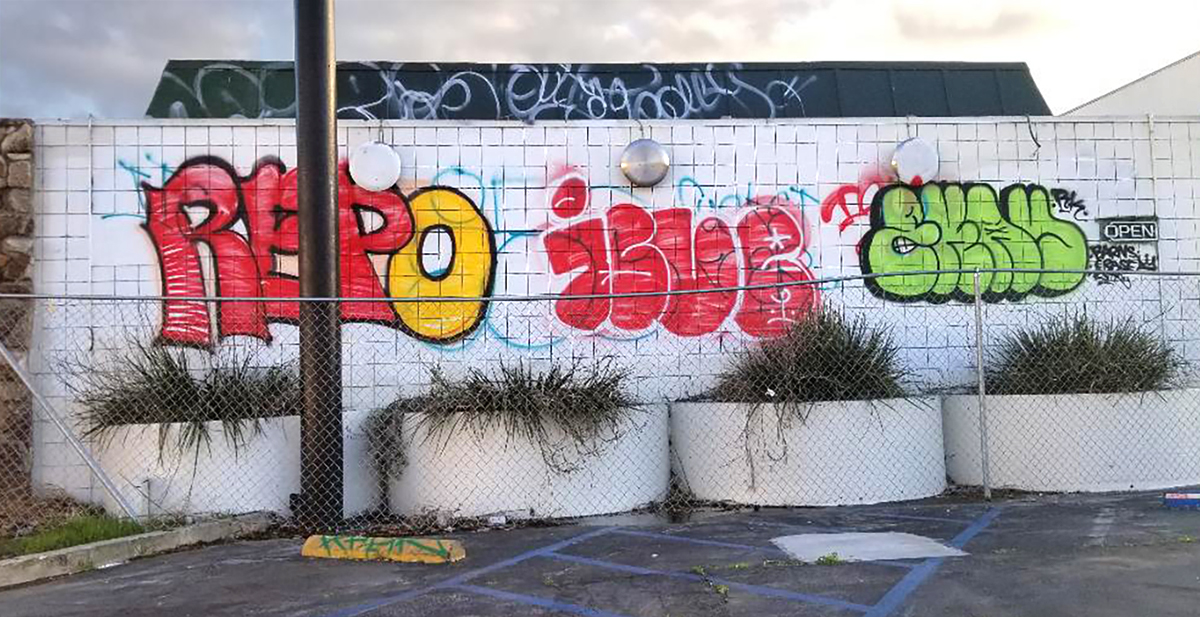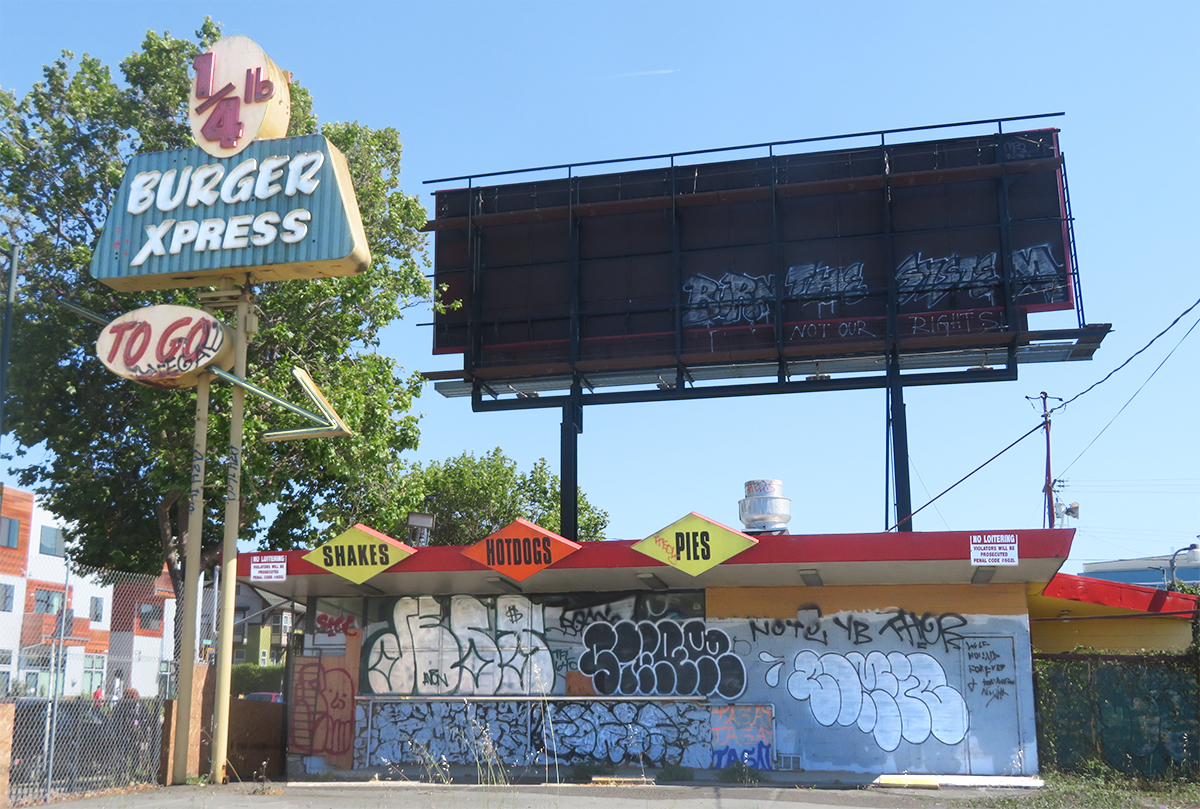
‘Googie Patrol’ Aids Endangered Sites
 |
For decades the glass-walled restaurant with a tilted roof and walls of multi-colored stone packed them in 24 hours a day, first as the Hull House and then renamed the Mission Family Restaurant. Closed in 2013, it sat vacant and unloved, slated for redevelopment that never happened.
In June 2020 the Pomona restaurant went up in flames in a fire apparently set by a vagrant. There had already been a couple of smaller fires in the 1958 structure, due to similar causes.
Historic buildings that are boarded up or otherwise fall into disuse are increasingly threatened by neglect and vandalism, says Adriene Biondo, a longtime Los Angeles preservationist.
“It’s tough to keep these historic buildings standing once the businesses are gone. And some buildings that are vacant sit vacant for years,” she says. “The buildings become targets.”
 |
She is concerned these days about the fates of Googie structures, Space Age restaurants whose startling tall signs and extravagant architecture were designed in the mid-century to snare the attention of drivers whizzing by.
Biondo and other preservations often succeed in convincing developers to preserve these iconic strictures, or at least portions of them, as their sites are developed for more intensive uses. But those agreements are of no use if before the site can be redeveloped the buildings burn down.
That’s why Biondo often takes to the road to see how her favorite Googie structures are doing. Are homeless people camping inside? Are the buildings otherwise in danger?
“I used to joke about how I've always had to go out on ‘Googie patrol,’” Adriene says, “and now it's a real thing. If I don't check on them, they'll go up in flames from people barbecuing, or warming themselves inside.”
“Sometimes it’s necessary to provide safeguards by boarding them up, but that becomes a double-edge sword because people go inside and you can’t see them,” she says. “People are seeking shelter from the cold and from the rain.”
 |
“People can also go in through the HVAC system on the roof,” she says, “so even boarding up the doors and windows doesn’t work. The owners are doing whatever they can.”
Biondo was sorry to see the Mission Family Restaurant go, as she and other preservationists had been working to save it since 2013. “The plan was to preserve the façade as it became a 7-Eleven,” she says.
She has kept watch over two buildings in particular in recent years, Corky's in Sherman Oaks and the Covina Bowl in Covina.
“It was Stanley Burke’s and then the Lamplighter, then Corky’s," Biondo says of the 1958 restaurant designed by the firm of Armet + Davis, which was behind so many Googie coffee shops.
“It’s probably the last restaurant still existing in Van Nuys from the cruising days, the days of teen culture. It’s been aggressively vandalized.”
“The new tenant is Chick-fil-A,” Biondo says. “Where other potential tenants wanted to level the site, Chick-fil-A plans to adaptively reuse the historic Googie building. A drive-through will be added, but all of the key Googie design elements will be restored.”
 |
There are similar problems facing the old Covina Bowl which has been vacant and boarded up since closing in 2017.
“That one’s important,” Biondo says. “It’s operated continuously from 1955 to 2017. It’s had its share of vandalism, from ripping out electrical wire by people who are salvaging the copper, to serious break-ins.”
One of those break-ins attracted much attention, as seen in the compelling 2017 headline from the Inland Valley Daily Bulletin: 'Paranoid prowler calls 911 from inside Covina Bowl, police find him in ceiling.'
The site will become a residential property, but historic features will be retained.
“Thanks to the support of the city of Covina, Los Angeles Conservancy, Friends of Covina Bowl coalition, and Covina Bowl Historical Society, Covina Bowl's key original character-defining features – including its towering neon sign, Egyptian pyramid entry, porte-cochere, subtropical landscaping, and coffee shop – will be incorporated into the condo project along with lawn bowling, and an on-site interpretive display element that will highlight the history of Covina Bowl,” Biondo says.
“But the plans are threatened by vandalism,” she says, noting that the electrical system had to be replaced at considerable cost due to vandalism and theft.
Being on 'Googie patrol' doesn’t make Biondo a law-enforcement officer. “We just keep the developer notified” of any problems, she says. But being on patrol can present hazards, as on a recent occasion at Corky’s.
“As I was taking photos, a guy suddenly leaped down from the roof right in front of me, so I took off toward the front door as fast as I could,” Biondo says.
“I could hear music coming from inside, a saxophone playing jazz; so I'm sure people are living in there now.”
“For under-utilized buildings like this,” she says, “the time clock is really ticking. What’s really needed is more vigilance.”
- ‹ previous
- 673 of 677
- next ›



